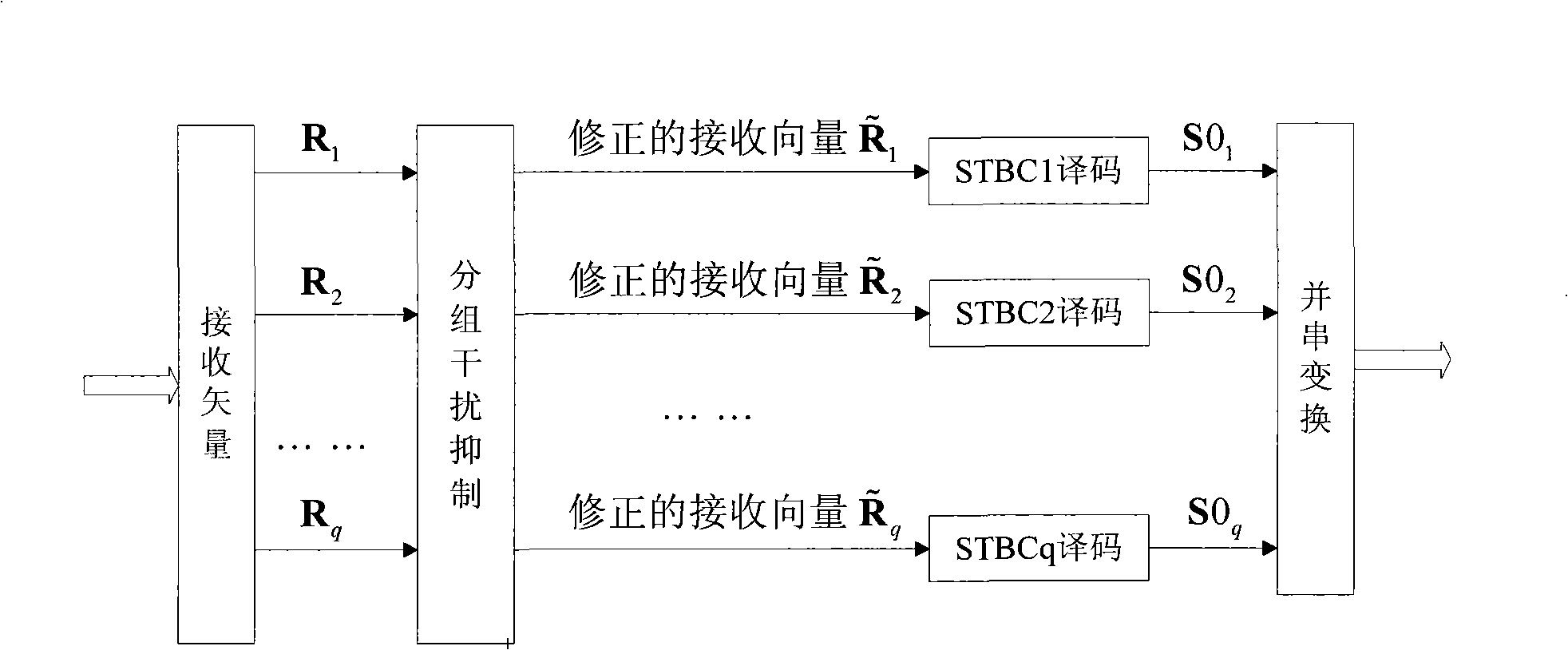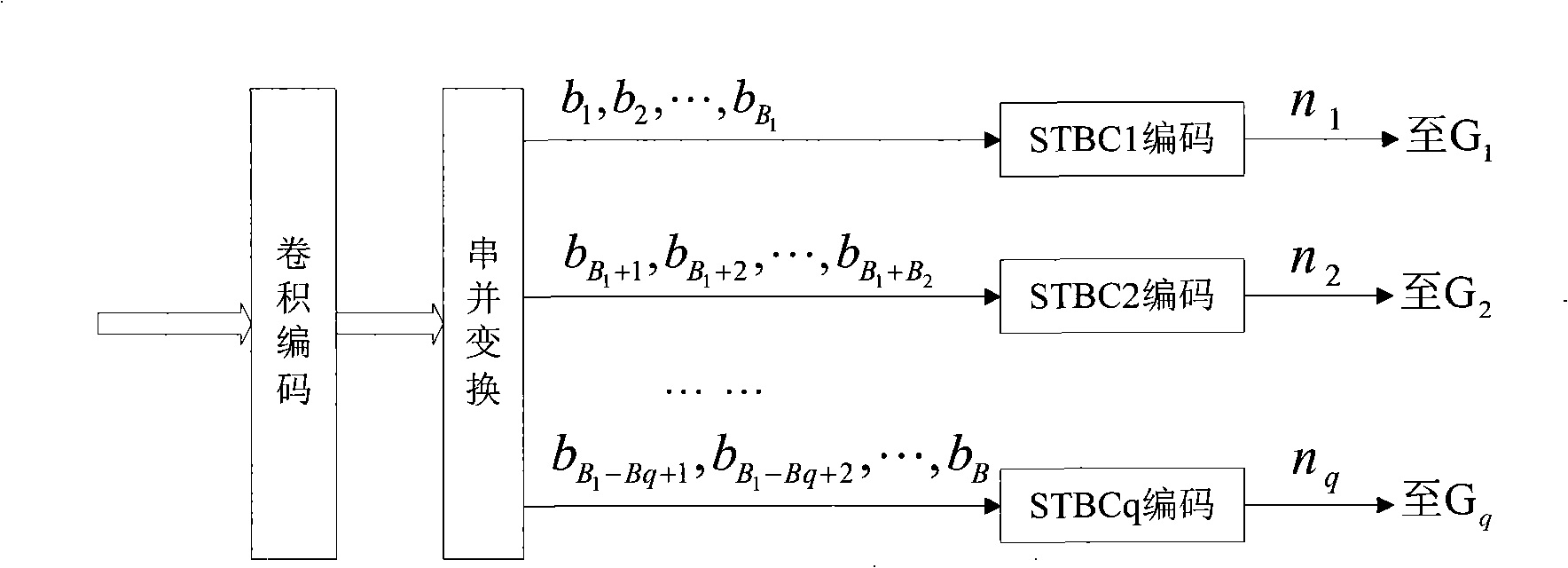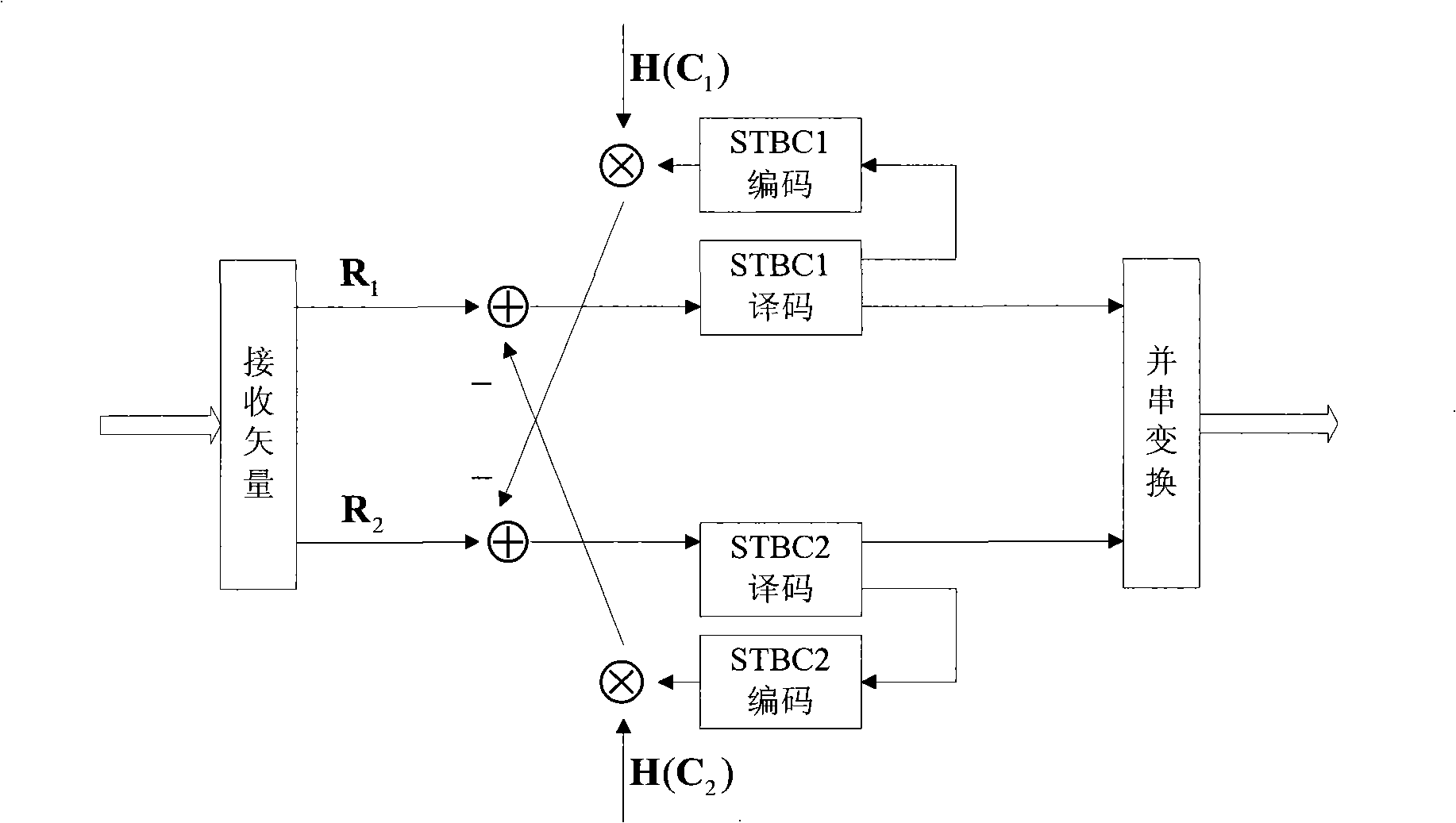Decoding method based on iterative layered space-time group codes
A space-time block code, iterative decoding technology, applied in the direction of preventing/detecting errors through diversity reception, can solve the problems of underutilization of reception diversity, waste of antennas, poor anti-fading performance, etc., to achieve full diversity gain, improve The effect of improved accuracy and anti-fading performance
- Summary
- Abstract
- Description
- Claims
- Application Information
AI Technical Summary
Problems solved by technology
Method used
Image
Examples
Embodiment 1
[0023] refer to image 3 , the present invention is in the MIMO system of 4 sending 4 receiving, suppose the number of iterations is 3, and its LSTBC decoding comprises the following steps:
[0024] Step 1: Group the channel matrix and receiving vector according to the number of groups of antennas, and save the original channel matrix and receiving vector.
[0025] 1.1 Divide every two antennas into one group, each group is coded by STBC respectively, and the coding matrix is:
[0026] C = C 1 C 2 = c 1 - c 2 * - ...
Embodiment 2
[0082] refer to Figure 4 , the present invention is in the MIMO system of 6 sending 6 receiving, suppose the number of iterations is 2, and its LSTBC decoding comprises the following steps:
[0083] Step 1: Group the channel matrix and receiving vector according to the number of groups of antennas, and save the original channel matrix and receiving vector.
[0084] 1.1 Divide every two antennas into one group, each group is coded by STBC respectively, and the coding matrix is:
[0085] C = C 1 C 2 C 3 = c 1 - c 2 ...
PUM
 Login to View More
Login to View More Abstract
Description
Claims
Application Information
 Login to View More
Login to View More - R&D
- Intellectual Property
- Life Sciences
- Materials
- Tech Scout
- Unparalleled Data Quality
- Higher Quality Content
- 60% Fewer Hallucinations
Browse by: Latest US Patents, China's latest patents, Technical Efficacy Thesaurus, Application Domain, Technology Topic, Popular Technical Reports.
© 2025 PatSnap. All rights reserved.Legal|Privacy policy|Modern Slavery Act Transparency Statement|Sitemap|About US| Contact US: help@patsnap.com



